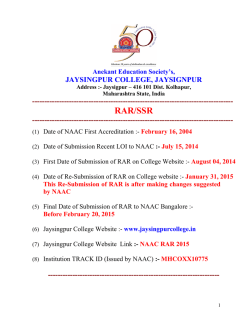
Green synthetic approach and antimicrobial activity of bidentate
Available online www.jocpr.com Journal of Chemical and Pharmaceutical Research, 2015, 7(1):197-203 Research Article ISSN : 0975-7384 CODEN(USA) : JCPRC5 Green synthetic approach and antimicrobial activity of bidentate schiff base ligands and their Ni(II) complexes under microwave irradiation K. P. Srivastava*, Sunil Kumar Singh and Bir Prakash Mishra Department of Chemistry, Jai Prakash University, Chapra, Bihar, India *Presently Principal, N. L. S. College, Jaitpur-Daudpur, Chapra, Bihar, India _____________________________________________________________________________________________ ABSTRACT A rapid, efficient, clean and environmentally benign exclusive synthesis of Schiff bases as new ligands and their complexes with Ni(II) have been developed using condensation of 2-propyl-3-phenylquinazoline with semicarbazide (ppqs, L) and thiosemicarbazide (ppqt, L’) efficiently using alkali catalyst with excellent yields under microwave irradiation. This method provides several advantages such as environmental friendliness, simple work-up procedure, short reaction times, non-hazardous and excellent yield of products. The results are compared with conventional methods for their yield and reaction time. The Schiff base ligands and the complexes were characterized by micro-analytical, conductometric, magnetic and spectroscopic studies. All the Schiff bases were bidentate (NO donor) ligands. All complexes were found to be six co-ordinate and ML2[1:2 (metal: ligand) ratio] type. The complexes are coloured and stable in air. Keywords: Schiff bases; Microwave irradiation; Nickel; Semicarbazone; Thiosemicarbazone _____________________________________________________________________________________________ INRODUCTION Schiff base ligands have been widely studied in the field of coordination chemistry for analytical, physical, and biochemical purposes mainly due to their facile syntheses, easily availability, electronic properties and good solubility in common solvents and they easily form stable complexes with most transition metal ions [1-6]. A large number of Schiff bases and their metal complexes have been found to possess important biological and catalytic activity. Due to their great flexibility and diverse structural aspects, a wide range of Schiff bases have been synthesized conventionally and their complexation behavior was studies. The development of the field of bioinorganic chemistry has increased the interest in Schiff base complexes, since it has been recognized that many of these complexes may serve as models for biologically important species and were investigated for antifungal, antimicrobial, anti- bacterial, anti-inflammatory, anti-convulsant, anticancer activities [7-11]. Since last few decades chemists were highly interested to do intensive research in the field of green chemistry [1214]. Their main aim is to use non-conventional approaches of synthesis because, of less or no solvent requirements, easy isolation, eco-friendly nature, less reaction time with good yield and purity of target molecules. Among them the area of microwave assisted synthesis is of special interest due to simple operational procedure, lesser reaction time and easy workup [15-17]. In view of above mentioned facts, in continuation of our work in this field [18-20], we planned to explore the new and efficient methodology for synthesis of some novel compounds by nonconventional microwave irradiation technique in the present paper. 197 K. P. Srivastava et al J. Chem. Pharm. Res., 2015, 7(1):197-203 ______________________________________________________________________________ Quinazolin‐4(3H)‐ones are classes of fused heterocyclic that are of considerable interest because of the diverse range of their biological activities such as, antimicrobial, anticancer, anticonvulsant , anti-inflammatory etc. Literature search reveals that more research work has been carried out so far on the synthesis of Schiff base derived from semicarbazide / thiosemicarbazide and several aldehydes/ketones[21-25]. But less attention was found to be paid for synthesis of Schiff base derived from 3-phenyl-2-propyl-quinazolin-4(3H)-one. Bearing all the above aspects, the present paper therefore aims to synthesis Schiff bases (derived from the reaction of 3-phenyl-2-propylquinazolin-4(3H)-one with semicarbazide / thiosemicarbazide) and their complexes with Ni(II)) ion and to illustrate their geometrical structures by using different techniques and also to study their antibacterial activity. EXPERIMENTAL SECTION All the chemicals and solvents used for the synthesis were of analytical grade. The solvents were purified by standard methods. The infrared spectra of the ligands and metal complexes were run as KBr discs in the range 4000400 cm-1 on a Shimadzu Infrared Spectrophotometer. Electronic spectra in the solid state as well as in solution were recorded on a Shimadzu UV-160, UV-visible spectrophotometer. Conductivity measurements of the metal complexes were done in DMF bridge model PW 9501 using Philips PW 9515/10 conductivity cell. Melting points were measured on an Electro-thermal 9100 apparatus and are uncorrected. Elemental analyses were recorded on a Carlo-Erba EA1110CNNO-Sanalyzer.Magneticsusceptibility of the complexes was carried out by Gouy’s method using Hg[Co(NCS)4] as standard. Microwave assisted synthesis were carried out in open glass vessel on a modified microwave oven model 2001 ETB with rotating tray and a power source 230 V, at output energy of 800W and 2450 MHz frequency. A thermocouple device was used to monitor the temperature inside the vessel of the microwave. The microwave reactions were performed using on/off cycling to control the temperature. Synthesis of Ligands Ligands were prepared by treating ethanolic solution of 3-phenyl-2-propyl-quinazolin-4(3H)-one hydrochloride (0.01m) and ethanolic solution of semicarbazide hydrochloride/thiosemicarbazide hydrochloride(0.01 M)under microwave irradiation for 5 min. The reaction was completed in a short time (3-5 min) with higher yields showing clear coloured solution. The resulting Schiff base ligands were then recrystallized with DMF and finally dried under reduced pressure over anhydrous CaCl2 in a desiccator. The progress of the reaction and purity of the products were monitored by TLC using silica gel G (yield: 85-89%)(Scheme-1). C17H16N2O C17H16N2O + + MWI NH2NHCONH2 3-5 minutes C18H19N5O PPQS MWI NH2NHCSNH2 3-5 minutes C18H19N5S PPQT Scheme-1: Microwave irradiated synthesis of ligands Synthesis of metal complexes The ethanolic solution of ligand and the Ni(II) salts were mixed thoroughly in 1:2 (metal: ligand) ratio and then irradiated in the microwave oven by taking 3-4 ml solution. The reaction was completed in a short time (3-5 min.) with higher yields. The resulting coloured products were then recrystallized with ethanol and DMF and finally dried under reduced pressure over anhydrous CaCl2 in a desiccator. The progress of the reaction and purity of the product was monitored by TLC using silica gel G (yield: 73-89%) (Scheme-2). NiX2 - MWI + 2L - - 3-5 minutes - [NiL2X2] - Where X= Cl , Br , I , NO3 ClO4 and L = PPQS & PPQT Scheme-2: Microwave irradiated synthesis of complexes Biological Evaluation The in vitro biological activity of the investigated Schiff base ligands (L – L’) and their metal complexes were tested against two bacteria B.subtilis, E.coli, S.aureus and Ralstonia solanacearum by disc diffusion method [26] using nutrient agar as medium. The bacteria were sub-cultured in the agar medium and were incubated for 24h at 37 ºC. 198 K. P. Srivastava et al J. Chem. Pharm. Res., 2015, 7(1):197-203 ______________________________________________________________________________ Standard antibacterial drug (Chloramphenicol) was used for comparison. The discs having a diameter of 4 mm were soaked in the test solutions and were placed on an appropriate medium previously seeded with organisms in petri plates and stored in an incubator at the above mentioned period of time. The inhibition zone around each disc was measured and the results have been recorded in the form of inhibition zones (diameter, mm) showed in Table 4. In order to clarify any effect of DMF on the biological screening [27], separate studies were carried out with solutions alone of DMF and they showed no activity against any microbial strains. The stock solution (1 mg/ml-1) of the test compounds was prepared in DMF. Each test was performed in triplicate in individual experiments and the average is reported. RESULTS AND DISCUSSION As a result of microwave assisted synthesis, it was observed that the reaction was completed in a short time with higher yields compared to the conventional method. In the microwave method homogeneity of reaction mixture was increased by the rotating of reaction platform tray. The confirmation of the results was also checked by the repeating of the synthesis process. Comparative study results obtained by microwave assisted synthesis; versus conventional heating method is that some reactions which required 2-3 h. by conventional method, was completed within 2-5 min. by the microwave irradiation technique, yields have been improved from 37-48% to 73-89%. All the metal complexes are coloured, solid and stable towards air and moisture at room temperature. They do not possess sharp melting points and decompose on heating at high temperature. The complexes are insoluble in common organic solvents but soluble in DMF and DMSO. The comparative results of conventional and microwave methods, analytical data of the compounds, together with their physical properties are consistent with proposed molecular formula are given in Table-1. The micro-analytical data suggest that the composition of all the metal complexes corresponds to 1:2 (metal: ligand) stoichiometry and have one or two water molecules i.e. hydrated. The observed molar conductance values (3.5 – 8.4 ohm-1cm2mole-1) are too low to account for any dissociation of the complexes in DMF at room temperature, indicating non-electrolytic nature of the complexes [28]. Table-1 The comparative results of conventional and microwave methods, analytical and physical data of the compoundsunder investigation Compounds (Colour) LH=PPQS (Orange) L’H=PPQT (Yellow-orange) [NiL2Cl2] (Yellow) [NiL2Br2] (Reddish brown) [NiL2I2] (Yellow red) [NiL 2(NO3)2] (Brown) [NiL2(ClO4)2] (Green) [NiL’2Cl2] (Brown) [NiL’2Br2] (Deep brown) [NiL’2I2] (Brownish red) [NiL’2(NO3)2] (Deep red) [NiL’2(ClO4)2] (Red) Yield Elemental analysis Mol. (%) Found (Calculated) % Conductance Mass (ohm-1 cm2 mol-1) CM CM (amu) C H N S Ni (MM) (MM) 2.0 45 67.28 5.91 21.81 --321 4.5 (2.5) (89) (66.9) (6.05) (22.05) 2.5 42 64.09 5.64 20.77 9.49 -337 3.5 (3.0) (83) (64.5) (5.50) (21.25) (9.50) 2.5 35 55.97 4.92 18.14 7.01 -772 6.8 (3.0) (75) (56.1) (5.05) (18.20) (7.10) 3.0 40 50.19 4.41 16.26 6.82 -861 7.1 (3.0) (79) (50.2) (4.50) (16.50) (7.00) 2.5 45 45.24 3.98 14.66 6.15 -955 7.9 (5.0) (85) (45.50) (4.10) (15.00) (6.20) 3.0 43 52.38 4.60 16.97 7.11 -825 6.4 (4.5) (83) (52.5) (4.70) (17.10) (7.20) 3.5 46 48.01 4.22 15.56 6.52 -900 8.4 (4.0) (89) (48.0) (4.10) (15.50) (6.70) 3.0 35 53.75 4.72 17.41 3.98 7.30 804 4.8 (4.0) (73) (53.8) (4.80) (17.50) (4.20) (7.40) 3.0 40 48.39 4.25 15.68 3.58 6.57 893 5.7 (4.0) (79) (48.5) (4.30) (15.70) (3.70) (6.60) 2.5 45 43.78 3.85 14.18 3,24 5.95 987 6.9 (4.5) (85) (43.8) (4.0) (14.20) (3.30) (6.20) 3.0 45 50.42 4.43 16.340 3.73 6.85 857 5.4 (4.0) (86) (50.5) (4.50) (16.50) (3.80) (7.00) 3.5 48 46.36 4.07 15.06 3.43 6.30 932 5.9 (4.0) (88) (46.50 (4.20) (15.10) (3.50) (6.40) CM = Conventional method, time in hours; MM = Microwave method, time in minutes Reaction Time 199 K. P. Srivastava et al J. Chem. Pharm. Res., 2015, 7(1):197-203 ______________________________________________________________________________ IR Spectral Studies The data of the IR spectra of investigated Schiff base ligands and their metal complexes are listed in Table-2.The IR spectra of the complexes were compared with those of the free ligand in order to determine the involvement of coordination sites in chelation. Characteristic peaks in the spectra of the ligand and complexes were considered and compared. The FT-IR spectra of the investigated complexes contained all the absorption bands from the ligands and some new absorption bands indicative of coordination of the ligands with metal ion through N & O and N & S. The IR spectra of both the ligands (ppqs & ppqt) show a broad band of medium intensity at 3200 cm-1 and 3480 cm-1, respectively which may be assigned to ν(N-H).The IR spectra of all the investigated complexes also show this band without any change in position and intensity, clearly indicating non-involvement of N atom of either amino or imino group in the coordination with Ni(II) ion. The spectrum of the ligand ppqs also shows a sharp and strong band at 1645cm-1 which can be assigned to ν(C=O).This band has shifted to a higher frequency region with slightly reduced intensity in the spectra of investigated complexes. The shift of band and the change in intensity suggest the coordination of carbonyl group of semicarbazone to Ni(II) ion. The spectrum of the ligand ppqs also shows a sharp and strong band at ~800 cm-1 which can be assigned to ν(C=S).This band has shifted to a lower frequency region in the spectra of investigated complexes. The downward shift of band suggests the coordination of thiocarbonyl group of thiosemicarbazone to Ni(II) ion. The other IR band of structural significance in the spectra of both ligands (ppqs/ppqt) appears ~1480 cm-1, which can assigned to the ν(C=N) group. This band also suffered a downward shift by 20-30 cm-1 in the investigating complexes indicating the coordination of the N to the Ni(II) ion. The coordination through azomethine N and O/S atoms of either semicarbazone/thiosemicarbazone moiety are further confirmed by the appearance of bands in the far IR region at 500-460, 535-530 and 425-400cm-1 which may be assigned to ν(M-O), ν(M-S) and ν(M-N), respectively. The coordination through meal-halogen are confirmed by the appearance of a band in the region 325-275 cm-1 which may be assigned to ν(M-X) (where X=Cl, Br or I). The coordination bands at 1460 and 1340 cm-1with a separation of 120 cm-1 confirming the monodentate nature of the nitrate group. The monodentate nature of perchlorate group is confirmed by the presence of far IR bands at 650 and 620 cm-1in the complexes [29-30]. On the basis of above discussion of IR spectral data, it is proposed that the ligands PPQS/PPQT acts as a bidentate ligand and coordination is proposed through azomethine N atom and O/S atoms of either semicarbazone /thiosemicarbazone moiety. The remaining coordination centers of the metal ions are satisfied by Cl-, Br-, I-, NO3and ClO4- ions. Table-2 Observed IR bands (cm-1) of Schiff base ligands and their Ni-complexes (Where s= sharp, m = medium & b = broad) Compound PPQS [NiL2Cl2] [[NiL2Br2] [NiL2I2] [NiL 2(NO3)2] [NiL2(ClO4)2] Compound PPQT [NiL’2Cl2] [NiL’2Br2] [NiL’2I2] [NiL’2(NO3)] [NiL’2(ClO4)2] υ(C=O) 1665 (s,b) 1700 (m,b) 1695 (m,b) 1690 (m,b) 1695 (m,b) 1690 (m,b) υ(C=N) 1480(s,m) 1450(m,b) 1455(m,b) 1455(m,b) 1455(m,b) 1455(m,b) υ(C=N) 1480(s,m) 1455(m,b) 1460(m,b) 1455(m,b) 1460(m,b) 1455(m,b) υ(C=S) 800(s,b) 760(m,b) 755(m,b) 760(m,b) 760(m,b) 758(m,b) υ(M-O) -500 (m) 515 (m) 505 (m) 465 (m) 490 (m) υ(M-S) -455(m) 460(m) 455(m) 450(m) 460(m) υ(M-N) -400(m) 410(m) 405(m) 405(m) 410(m) υ(M-N) -425(m) 425(m) 410(m) 410(m) 420(m) υ(M-X) -325(m) 295(m) 275(m) --υ(M-X) -295(m) 305(m) 315(m) --- υ(M-O) 530 (m) 535 (m) Electronic Spectral Studies The investigated Ni(II) complexes exhibit three bands in the range of 10120-11600 cm-1, 15080-16700 cm-1 and 23500-25100 cm-1, assigned to 3A2g (F) → 3T2g (F) (ν1), 3A2g (F) → 3T1g(F) (ν2) and 4A2g (F) → 3T1g(P) (ν3) transitions respectively and are in confirmatory with the octahedral geometry for the complexes [31-32]. 200 K. P. Srivastava et al J. Chem. Pharm. Res., 2015, 7(1):197-203 ______________________________________________________________________________ Magnetic Moment Studies The magnetic moments of the complexes under investigation were observed as expected and given in table-3.The complexes showed µeff values in the range of 3.01 – 3.16 B.M., indicative of three unpaired electrons per Ni(II) ion suggesting that these investigated complexes have structures within the range consistent to mononuclear octahedral geometry [33-34]. Table-3 Electronic spectral bands, magnetic moments and proposed geometry of the Ni(II) complexes Compound 3 LH=PPQS L’H=PPQT [NiL2Cl2] [[NiL2Br2] [NiL2I2] [NiL 2(NO3)2] [NiL2(ClO4)2] [NiL’2Cl2] [NiL’2Br2] [NiL’2I2] [NiL’2(NO3)] [NiL’2(ClO4)2] Band position with assignment (cm-1) A2g(F) →3T2g(F) 3A2g(F) →3T1g(F) 3A2g(F) →3T1g(P) ------11200 15080 24100 10400 15200 25100 10900 16210 23600 10600 16545 25050 11300 16700 24120 10700 15120 24855 11600 15480 23500 11100 16250 24345 11260 15480 24015 10120 16520 24558 Magnetic moments µ (BM) --3.04 3.07 3.12 3.09 3.10 3.16 3.11 3.05 3.09 3.04 Proposed geometry of complexes --Octahedral Octahedral Octahedral Octahedral Octahedral Octahedral Octahedral Octahedral Octahedral Octahedral Proposed Structures On the basis of the above observations, it is tentatively suggested that Co(II) investigated complexes show an octahedral geometry [Figure-1] in which the Schiff bases act as bidentate [N & O/S donor] ligands. N N H N N R' R N O X C N NH 2 H N H 2N N N O R' S X C NH 2 Ni X R R N Ni C R' H N C H 2N N H S R R' N N X N N Figure-1: Proposed octahedral structure of [NiL2X2]and [NiL’2.X2] complexes Where X= Cl-, Br-, I-, NO3- and ClO4- ions R = n-propyl group and R’= phenyl group Anti-bacterial Activity The difference in anti-bacterial activities of the investigated complexes, ligands and their parent drugs were studied and the results are presented in table-4. The cursory view of the data indicates the following trend in antibacterial activity of the substances under investigation: Ni(II)-complexes ˃ Schiff base ligands All the Ni(II)-complexes under investigation were more active than the ligands against all the investigated bacteria. These results substantiate our findings and the findings of some other workers [35-36] that biologically inactive compounds become active and less biologically active compounds become more active upon coordination. The higher activity of the metal complexes may be owing to the effect of metal ions on the normal cell membrane. This can be well ascribed to Tweedy’s Chelation Theory [37]. 201 K. P. Srivastava et al J. Chem. Pharm. Res., 2015, 7(1):197-203 ______________________________________________________________________________ Table-4 In vitro Antimicrobial Activity of the Schiff bases ligands and their Ni-complexes (in µgmL-1) Compound LH=PPQS L’H=PPQT [NiL2Cl2] [[NiL2Br2] [NiL2I2] [NiL 2(NO3)2] [NiL2(ClO4)2] [NiL’2Cl2] [NiL’2Br2] [NiL’2I2] [NiL’2(NO3)] [NiL’2(ClO4)2] Chloramphenicol B.subtilis 12 8 15 16 17 18 20 18 25 20 25 27 29 Zone of inhibition (in mm) E.coli S.aureus Ralstonia solanacearum 15 14 9 11 12 14 16 16 20 17 18 18 18 21 21 14 22 24 19 18 18 24 22 20 22 23 22 21 18 23 25 22 25 22 21 30 26 25 32 CONCLUSION In conclusion an efficient synthesis of Schiff base derived from 3-phenyl-2-propyl-quinazolin-4(3H)-one and their Ni(II) complexes carrying potential pharmacophores have been prepared in an environmentally benign microwave protocol. The yields of the products formed under MWI were high in comparison to classical method and time required for completion of these reactions was also less in comparison to classical method. The synthesized Schiff base ligands coordinated with the Ni(II) ion in a bidentate manner through the oxygen/sulfur and azomethine nitrogen. Antimicrobial data suggests that the metal complexes are better antibacterial agents as compared to their ligands. The compounds also inhibit the growth of bacteria to a greater extent as the concentration is increased. In conclusion, we have described here an efficient and environmentally benign synthesis of Schiff base ligands and their corresponding Ni(II) complexes under microwave irradiation using water and methanol as solvents. Further, this method is simple, mild and ecofriendly from green chemistry point of view. REFERENCES [1] R Pagadala; PAli; JS Meshram, J. Coord. Chem., 2009, 62(24), 4009-4017. [2] VK Yadav, N Kumari; Lallan Mishra, Indian J. Chem., 2011, 50A (8), 1035-1042. [3] R Pal, V Kumar, A K. Gupta, Res. J. Chem. Environ., 2014, 18(1), 72-76. [4] VP Daniel, B Murukan, BS Kumari, K Mohanan, Spectrochim. Acta. Part A., 2008, 70, 403. [5] BT Thaker, KR Surati, CK Modi, Russ. J. Coord. Chem., 2008, 34, 25. [6] KR Surati, BT Thaker, GR Shah, Synth. React. Inorg. Met-Org. Nano-Met. Chem., 2008, 38, 272. [7] AA Nejo, GA Kolawole, AO Nejo, J. Coord. Chem., 2010, 63, 4398. [8] R Vafazadeh, M Kashfi, Bull. Korean Chem. Soc., 2007, 28, 1227. [9] N Raman, J Dhaveethuraja, A Sakthivel, J. Chem. Sci., 2007, 119, 303. [10] LC Nathan, JE Koehne, JM Gilmore, KA Hannibal, WE Dewhirst, TD Mai, Polyhedron., 2003, 22, 887. [11] KCGupta, AKSutar, Coord. Chem. Rev. 2008,52 (12–14), 1420–1450. [12] VPolshettiwar, Aqueous Microwave Assisted Chemistry: Synthesis and Catalysis, 2010, Royal Society of Chemistry, Cambridge, UK. [13] PAli; PRamakanth; JSMeshram, J. Coord. Chem., 2010, 63(2), 323-329. [14] BLHayes,Recent Advances in Microwave-Assisted Synthesis, Aldrich Chimica Acta,2004, 37(2), 66-76. [15] NELeadbeater,Microwave Heating as a Tool for Sustainable Chemistry, 2010, CRC Press,Boca Raton, USA. [16] BLHayes,Microwave Synthesis: Chemistry at the Speed of Light, 2002, CEM, USA. [17] PKapoor, NFahmi, RVSingh,Spectrochimica Acta Part A, 2011, 83, 74. [18] KPSrivastava, et al. Der Chemica Sinica, 2011, 2 (2), 66-76. [19] KPSrivastava,et al. ISOR Journal of Applied Chemistry; 2014, 7(4), 16-23. [20] KPSrivastava,et al. Orient. J. Chem.; 2014, 30(3), 1233-1241. [21] KS Prasad,LSKumar,S Chandan, BJayalakshmi,HDRevanasiddappa,SpectrochimActa A Mol Biomol Spectrosc., 2011,81(1),276-82. 202 K. P. Srivastava et al J. Chem. Pharm. Res., 2015, 7(1):197-203 ______________________________________________________________________________ [22] AKNanda, S Ganguli,RChakraborty, Molecules, 2007, (12) 2413-2426. [23] MMAly,YA Mohamed, KMEl-Bayouki, WM Basyouni; SYAbbas, European Journal of Medicinal Chemistry, 2010; 45: 3365-3373. [24] FMAAhmad, VMahammadyunus, Orient. J. Chem., 2014, 30(1), 111-117. [25] LKubicova, PKudelova, HDostal, KWaisser,Folia Pharm. Univ. Carol., 2000, 25, 81–87. [26] DGreenwood, R Snack, JPeurtherer Medical microbiology: A guide to microbial infections: Pathogenesis, immunity, laboratory diagnosis and control, 15th ed.1997. [27] WJGeary, Coord. Chem. Rev., 1971, 7, 81. [28] CC Addison,N Logan, SC Wallwork,DC Barner, Quart, Rev, 1971. [29] RANyquist, CLPutzig,M A Leugers, Infrared and Raman Spectral Atlas ofInorganic Compounds and Organic Salts, Academic Press, New York, 1995. [30] BJ Hathaway; AEUnderhill; J. Chem. Soc. 1961, 3091. [31] BNFiggis,Introduction to Ligand Field, Wiley eastern Ltd, New Delhi, 1976, 279. [32] ABP Lever,Inorganic Electronic Spectroscopy, Elsevier, Amsterdam, 1984, 23. [33] CSpinu, A.Kriza,Acta Chim. Slov, .47, 2000, 179. [34] RL Carlin, A J Van Dryneveledt, Magnetic properties of transition metal compounds, Springer-Verlag, New York, 1997. [35] MLi-June, Med. Resear. Rev. 23, 2003, 697. [36] ZH Chohan et al., J. Enz. Inhib. Med. Chem. 2004, 19, 417. [37] SBelwal, Seema, NFahmi,RV Singh. Ind. J. Chem. Sect. A, 1999, 38, 597. 203
© Copyright 2026
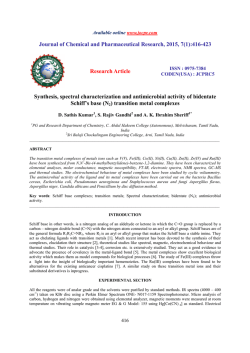
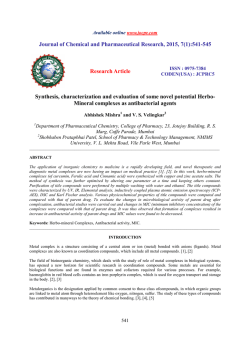
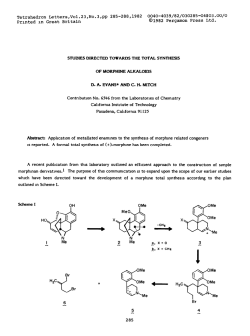
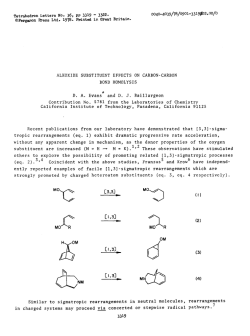
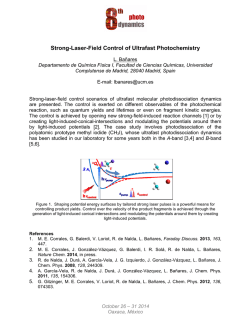
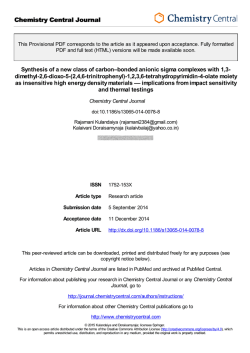
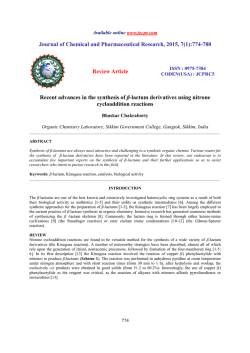
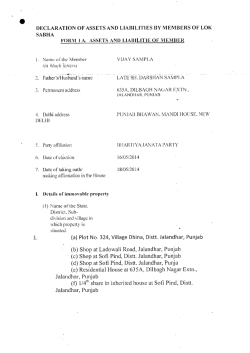
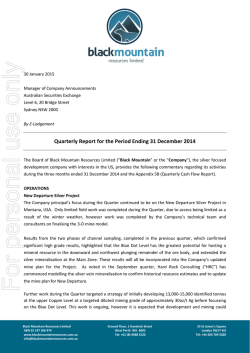
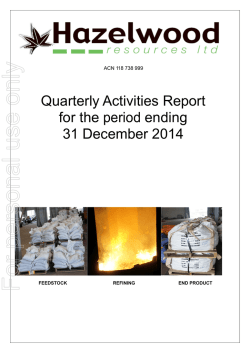
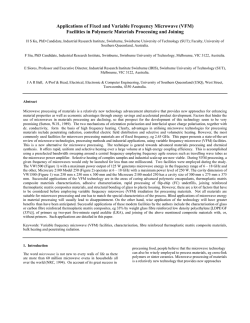
![arXiv:1501.07540v1 [math.AT] 29 Jan 2015](http://s2.esdocs.com/store/data/000489442_1-e95e1819e216359e95b991ff830a0678-250x500.png)
